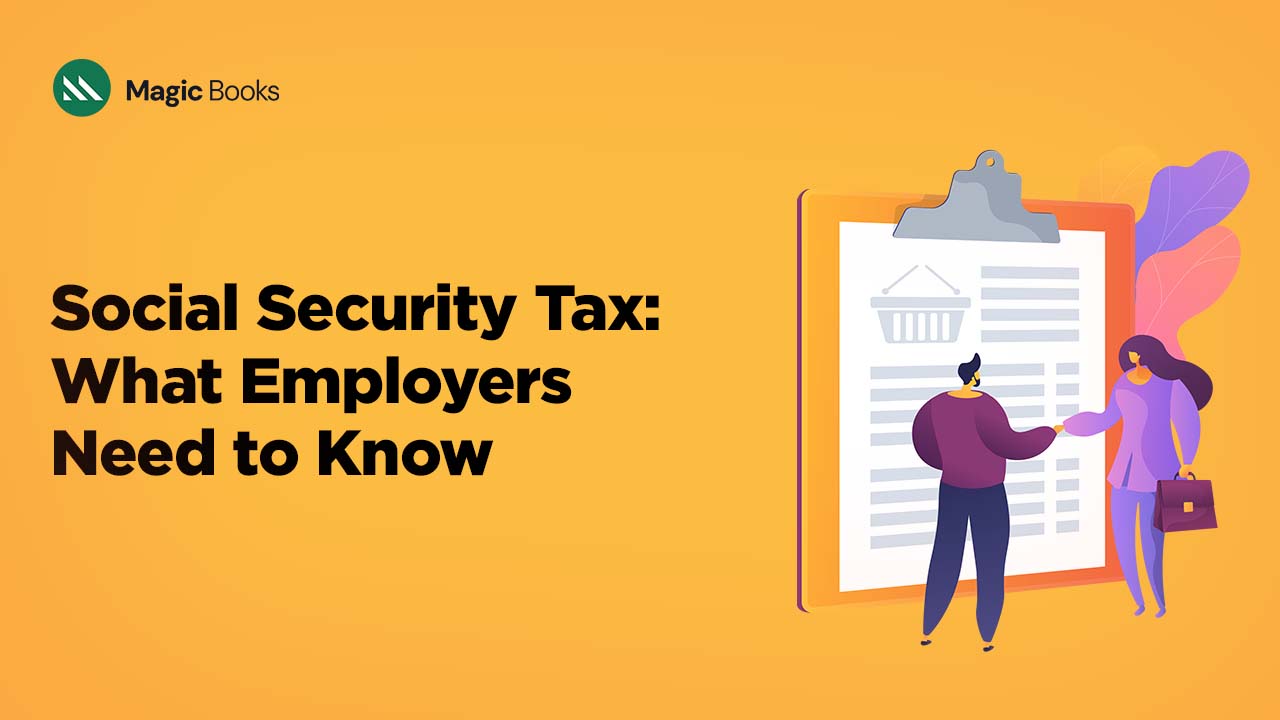The year 2025 demands employers must fully grasp Social Security tax requirements to remain compliant with financial regulations. Under Federal Insurance Contributions Act (FICA) legislation the Social Security tax system functions as the base foundation of United States social insurance programs that deliver benefits to retirees together with disabled individuals and surviving dependents of deceased workers. This paper examines the essential points about Social Security taxes for employers during 2025 by focusing on taxation rates and wage thresholds as well as employer responsibilities and new laws and strategic measures for maintaining tax compliance.
Overview of Social Security Taxes
Social Security taxes support the funding of the Old-Age Survivors Disability Insurance program through the OASDI system to provide benefits for qualified recipients. FICA demands that both employers alongside employees must pay Social Security and Medicare taxes. In 2025 the Social Security tax rate reaches 12.4% for employee taxable earnings but requires 6.2% from both employers and employees. A specific wage base limit determines which earnings become taxable for Social Security since taxes will only collect up to that threshold value. Both employers and employees must pay Medicare taxes at 1.45% on all earnings since there is no wage base limit applicable to this tax. The entire Social Security and Medicare tax burden rests with self-employed individuals causing their overall tax responsibility to reach 15.3% of taxable income before 12.4% for Social Security and 2.9% for Medicare.
2025 Social Security Wage Base
In 2025 the Social Security wage base functions as both the contribution and benefit base because it defines the maximum earnings amount subject to Social Security tax. The Social Security Administration (SSA) established the yearly wage base at $176,100 for 2025 while increasing it from $168,600 the previous year. Employers need to understand the payroll tax calculations because the annual wage base increases based on national average wage index changes.
The 2025 annual pay of $200,000 subjects only the initial $176,100 to the 6.2% Social Security tax which creates combined employer-employee payments of $10,918.20. Social Security excludes taxations on wage amounts above the base limit but the entire amount remains taxable under Medicare regulations. Employees must pay Medicare taxes on their entire income as the tax has no wage base limit and will face an extra 0.9% Medicare surtax for earnings exceeding specific thresholds ($200,000 for single filers and $250,000 for married couples filing jointly).
Medicare Tax Considerations
Employers who withhold Social Security taxes must also participate in Medicare tax withholding according to FICA provisions. Employers and employees equally contribute 1.45% to Medicare taxes which totals to 2.9% of the tax rate. Medicare tax does not have any wage base restrictions because every registered wage amount becomes taxable.
Employees whose earnings surpass $200,000 for single filers or $250,000 for married couples filing jointly need to pay an additional 0.9% Medicare tax. An employer must begin deducting the tax when an employee earns more than $200,000 even though the employee might not file separately.
Self-Employment Tax
The Self-Employment Contributions Act (SECA) imposes taxes simultaneously on the employer and employee amounts from FICA taxation on people who run their own businesses. In 2025 the regulations demand a Social Security tax rate of 12.4% on self-employment income up to $176,100 coupled with a Medicare tax rate of 2.9% applied to all self-employment income amounts. The maximum self-employed Social Security tax in 2025 reaches $21,836.40 due to combined employer and employee contributions.
Employer Responsibilities:
The essential duty of employers to maintain Social Security tax compliance functions through their position connecting employees to federal authorities. A business faces severe consequences including financial losses besides legal problems if it fails to meet its tax obligations. Employers need to demonstrate great attention in carrying out their responsibilities related to social security taxỏfıhtfıúdepćiositıon and reporting according to IRS rules which continue to evolve. The following section details employer responsibilities regarding Social Security tax management in a complete guide for 2025.
1. Social Security Tax deductions for wages should be applied by employers to their employees’ paychecks.
An employer has the fundamental duty to deduct Social Security taxes that employees need to pay through wage withholdings. According to FICA rules employees must pay Social Security taxes at six percent of their earnings rate while their employer adds another six percent resulting in total Social Security tax payments of twelve percent.
Every paycheck requires exact Social Security withholding from employers according to yearly wage limits which determine the amounts withdrawn from employee wages. Every dollar earned in excess of $176,100 during 2025 will not be taxed for Social Security.
Example:
Employees who earn $120,000 per year must have 6.2% of their income deducted by their employer for their Social Security tax payment which equals to $7,440. An employer needs to provide an extra-governmental contribution equivalent to the $7,440 amount reported by the employee. Employers should stop Social Security tax withholding from high earners who reach earnings above $176,100 in the year. Both employer and employee contributions for Medicare tax will remain active because Medicare does not impose any wage limitations.
2. Employers need to match exactly how much Social Security tax their employees had deducted from their wages.
Employers handle wage tax deductions from employee salaries correctly while they must provide a dollar-for-dollar equivalent to each Social Security deduction. The employer must match all the Social Security contributions that their workers already made which doubles down the total financial duty toward the program.
Key Considerations for Employers:
- Despite any mistakes in withholding Social Security tax from employees the employer remains obligated to pay the full employee share of these contributions.
- The inclusion of Social Security tax costs in budget plans becomes essential for employers since new employees who approach or exceed the wage base figure will need consideration.
- Self-employees need to pay Social Security tax for both the worker and employer sides totaling 12.4% of their earnings reaching the wage base amount.
3. Employers must transfer their Social Security contribution amounts to the IRS as per directions.
Employers have the responsibility to transfer Social Security taxes they withhold and match to the Internal Revenue Service (IRS) according to established time requirements. Firms must file their tax deposits according to their total payroll tax liability through semi-weekly, monthly or other prescribed schedules.
Deposits by semi-weekly depositors who managed more than $50,000 in payroll taxes in the previous lookback period need to submit payments bi-weekly within a three-day business period post-payroll issuance.
In the case of Month Depositors employers who reported less than $50,000 in payroll taxes must send deposits to IRS no later than the 15th day of the succeeding month.
Employers must perform next-day funding for deposits when their daily tax liability surpasses $100,000 since penalties arise otherwise.
4. Tax reports must be filed using Form 941 together with Form W-2
Employers need to file wage and tax data by using precise IRS forms together with their Social Security tax payment obligations.
Employers need to submit Form 941 (Employer’s Quarterly Federal Tax Return) quarterly for revealing wage payments with IRS taxes withheld and employer tax responsibilities. Employers must file Form 941 using outlined deadlines for 2025 including Q1 April 30 and Q2 July 31 and Q3 October 31 and Q4 January 31 of the following year.
Q1: April 30
Q2: July 31
Q3: October 31
Q4: January 31 (of the following year)
Each January the employer must distribute Form W-2 (Wage and Tax Statement) accurately showing employee total taxable wages and Social Security and Medicare tax withholdings and other necessary tax details to every staff member.
Employers must provide Form W-3 (Transmittal of Wage and Tax Statements) to the Social Security Administration (SSA) for reporting worker W-2 wage and tax amounts in total.
5. Maintaining Proper Payroll Records
Employers need to keep payroll records for at least four years because IRS regulations along with Department of Labor requirements demand them. These records should include:
All compensation records for each employee need to show the basic salary together with additional incentives along with paid overtime performance.
✔ Social Security and Medicare tax withholdings.
✔ Payroll tax deposit records and IRS filings.
✔ Copies of Form W-2 and Form 941 submissions.
Why Recordkeeping Matters:
The IRS conducts audits without warning or they initiate examinations because of discrepancies found in payroll documentation.
The lack of proper recordkeeping leads to penalties when an employer fails to correctly report or pay Social Security taxes.
A documented payroll record establishes proof for tax assessment challenges together with employee wage disputes.
Employers need to adopt cloud-based payroll management platforms that automatically calculate taxes and maintain safe record storage to create tax reports to enhance regulatory conformity.
6. Handling IRS Audits and Penalties
Non-compliance with Social Security tax requirements will result in multiple severe financial penalties.
The penalty for late tax deposit amounts to between 2% and 15% of unpaid amounts and depends on the late payment duration.
Your late submission of Form 941 will create a Failure to File Penalty that calculates at 5% per month from the entire tax amount but never exceeds 25%.
Social Security tax responsibility violations that result from willful non-payment will lead to the IRS implementing Total Fund Recovery Penalty charges that require responsible owners along with payroll administration personnel to pay all unpaid taxes with added interest.
To prevent penalty assessments employers need to follow several steps:
- Organizations need to establish computerized systems that conduct tax payment disbursements.
- The review of payroll records should happen prior to filing IRS documents to detect any inaccuracies.
- Detailed financial records need to be maintained because they give documentation to support audit requirements.
Implications of Wage Base Changes
The yearly modifications to the Social Security wage base create financial effects primarily affecting workers with high earnings alongside their employers. An elevated wage base increases the tax rate for Social Security which impacts the overall tax spending between employers and employees.
The 2025 wage base of $176,100 determines the maximum Social Security tax contributions to reach $10,918.20 for both employers and employees but this exceeds the 2024 threshold of $10,453.20. All businesses must budget appropriately for payroll expenses that match the new wage base amount since updated payroll system implementations will verify both regulatory adherence and penalty prevention.
Legislative Developments and Future Considerations
Legislative bodies actively examine Social Security through various plans which seek to resolve its funding issues while matching evolving population patterns. Employers need to monitor possible legislative developments which will affect both Social Security taxes and their payroll procedures.
A significant proposal suggests extending the earnings amount that faces taxation through Social Security payroll deductions. The Congressional Budget Office examined potential strategies to boost Social Security wages including increasing the wage base and discarding the wage base entirely to establish Social Security tax obligations for all employee compensation. The proposed changes would heavily impact employers who employ numerous high-earning staff because they would require higher payroll tax deductions.
Policymakers now explore changing the Social Security tax rate because they aim to make the program sustainable. Organizations should watch evolving tax rates and wage base changes because they will directly impact how their payroll operates as well as financial budgeting elements.
Every employer needs to have clear knowledge about Social Security tax requirements. Business managers need to understand compliance with withholding reporting and deposit requirements as both legal responsibility and management best practices. Business operations remain smooth while the Social Security program remains sustainable through employer application of tax changes management coupled with best practices usage and reliable payroll solutions implementation. Future payroll tax management success depends upon both proactive planning and full compliance which will minimize the possibility of facing penalties in 2025.
Organizations that monitor emerging changes successfully become prepared for new developments so they fulfill their regulatory needs and optimize financial outcomes. Knowledge about Social Security tax obligations proves essential for the operation of every business whether you operate a small one or handle a large corporation in the current economic situation.



